Key takeaways:
- Customer feedback loops foster continuous dialogue, leading to improved offerings and increased customer loyalty.
- Effective feedback collection relies on timing, ease of process, and consistent follow-up to show customers their input is valued.
- Utilizing tools like engaging survey platforms and chatbots enhances feedback collection and real-time sentiment analysis.
- Embracing feedback as a dialogue rather than criticism drives ongoing improvement and strengthens customer relationships.
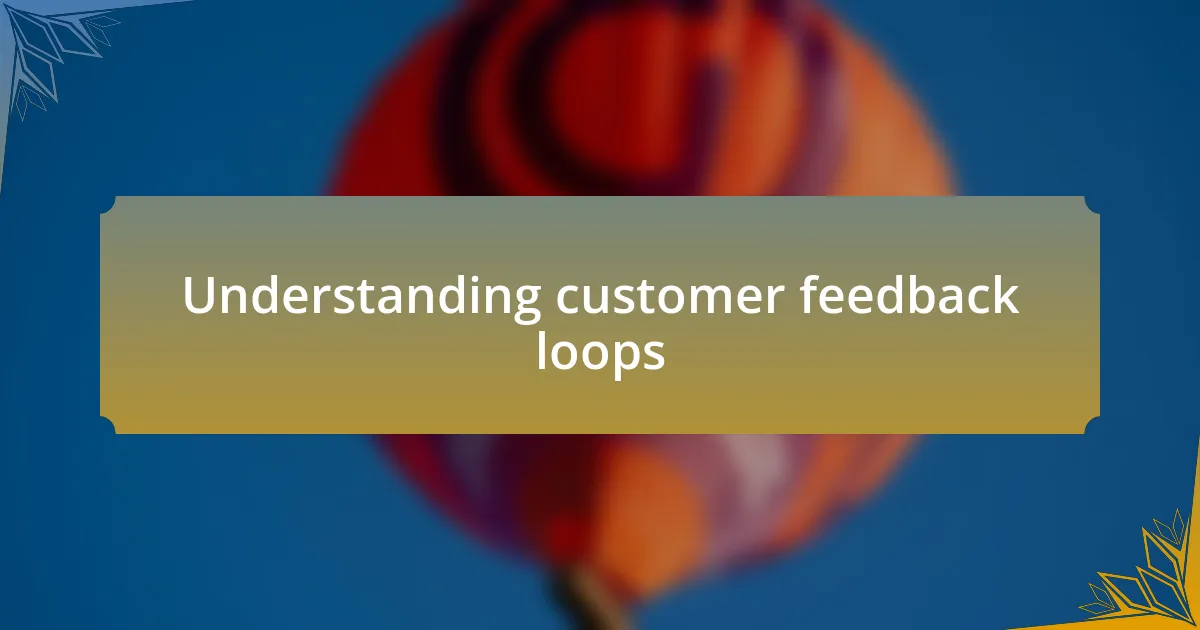
Understanding customer feedback loops
Understanding customer feedback loops is pivotal for businesses aiming to improve their offerings. These loops are essentially cycles where customer insights are gathered, analyzed, and acted upon, creating a continuous dialogue between customers and the company. Reflecting on my own experiences, I remember a time when we implemented a feedback system that seemed daunting at first. However, the insights we gained were transformative, leading to changes we hadn’t even anticipated.
Have you ever wondered how your customers truly feel about your service? I believe that asking for feedback is just the beginning. It’s the real magic that happens when you take those insights seriously that sets successful companies apart. When I was part of a team revamping our customer support system, we started integrating direct customer suggestions into our strategy. The level of engagement skyrocketed, and it felt like we were finally listening to the voice of the customer.
Moreover, I’ve seen firsthand how a well-structured feedback loop can foster customer loyalty. Once, a customer reached out with a suggestion about simplifying our checkout process. Instead of just thanking them and moving on, we took action. After implementing their feedback, not only did we see a drop in cart abandonment rates, but we also received glowing comments from customers appreciating the change. It’s these insightful interactions that remind us: every piece of feedback is an opportunity for growth and connection.
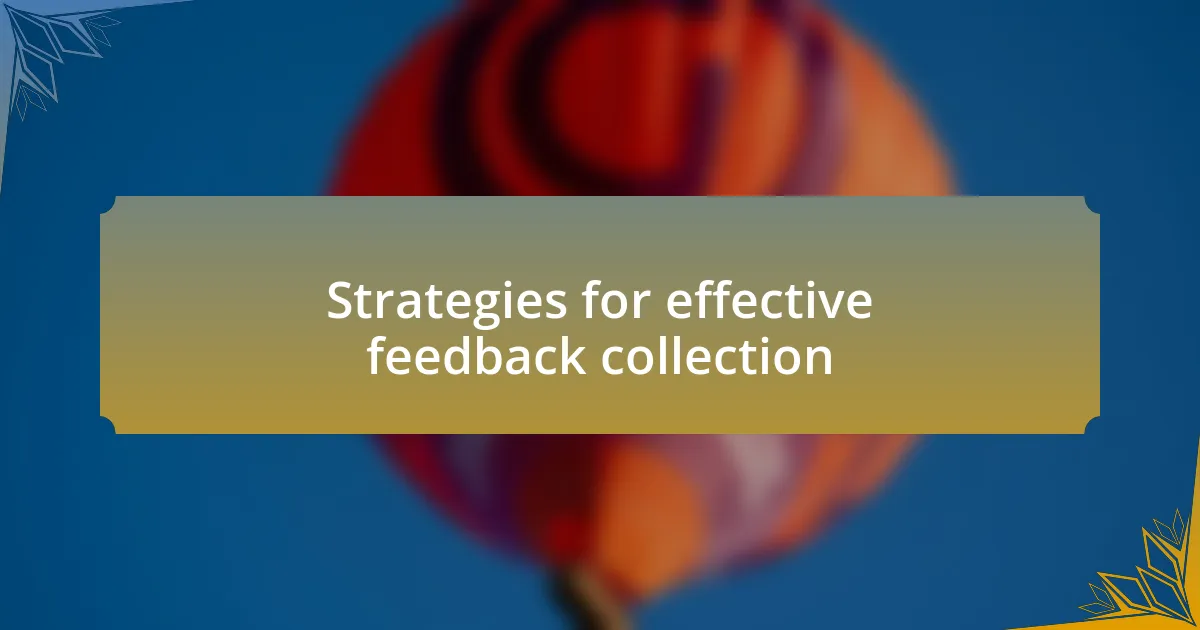
Strategies for effective feedback collection
When it comes to collecting effective feedback, I’ve found that timing is everything. I recall a situation where we sent out surveys immediately after a purchase. This approach not only captured the customer’s fresh experience but also yielded richer insights. It made me realize that waiting too long often means missing out on valuable details.
Another strategy I’ve implemented is making feedback collection effortless for customers. For instance, a simple pop-up asking for input after a web chat session quite literally changed the game for us. I remember thinking how many times I’d chosen not to fill out lengthy forms myself. Streamlining the process encouraged more customers to share their thoughts, leading to a treasure trove of insights.
Lastly, I can’t stress enough the importance of follow-up. When customers see that their feedback leads to tangible changes, they feel valued. I remember reaching out to individuals after addressing their suggestions, and the gratitude that poured in was overwhelming. It reinforced my belief that nurturing this relationship through effective feedback strategies creates a loyal customer base willing to share their experiences time and time again.
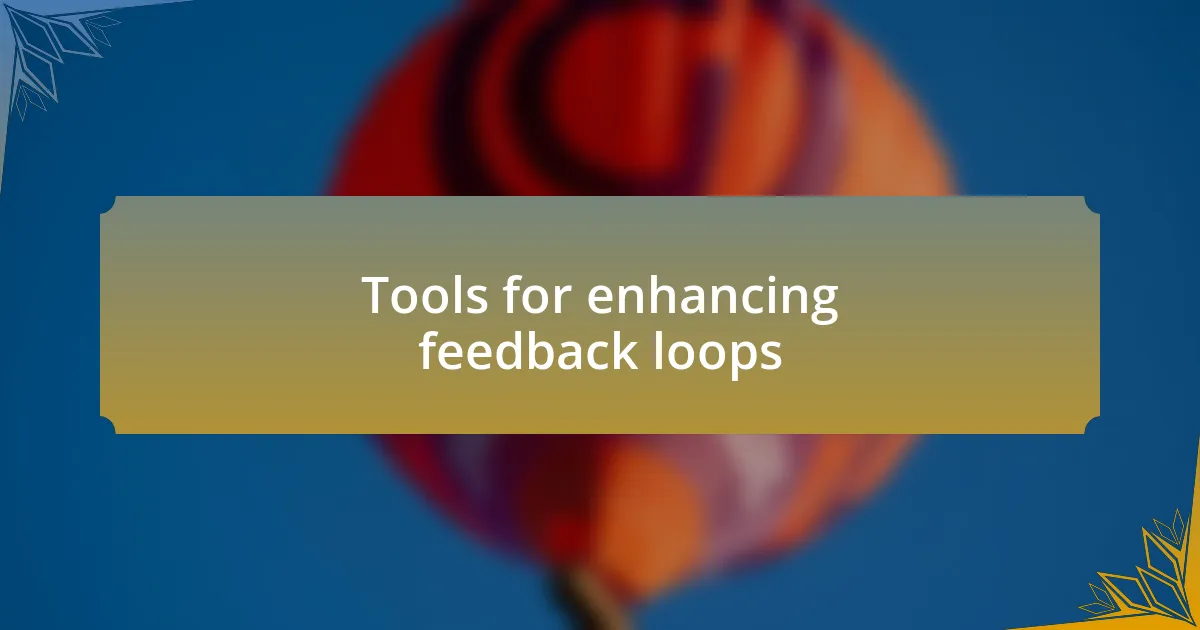
Tools for enhancing feedback loops
When it comes to tools for enhancing feedback loops, I’ve found that utilizing dedicated survey platforms can be a game changer. For example, I experimented with a tool called Typeform, which offered an engaging user interface that made it easy for customers to participate. I was pleasantly surprised at how a visually appealing survey transformed our response rates—customers seemed more willing to share their opinions when the process felt less like a chore. Have you ever noticed how the aesthetics of a survey can impact the engagement levels?
In addition to surveys, chatbots have become invaluable in my toolkit. I’ve implemented a chatbot that prompts users for feedback post-interaction, and the results were eye-opening. It felt almost like having a personal assistant who could gather sentiments in real-time, which led me to wonder how many insights we miss by not leveraging technology here. The immediate response from customers reassured me that they felt their voices mattered at that very moment.
Lastly, integrating analytics tools can enhance the way we interpret feedback. I once juggled data from various sources without a cohesive system and realized I was missing crucial patterns that could drive improvement. Using platforms like Google Analytics alongside feedback tools allowed me to create a narrative around customer sentiments and behaviors. Have you experienced the frustration of not connecting the dots? Merging these insights has ultimately empowered me to craft strategies that resonate with our customers on a deeper level.
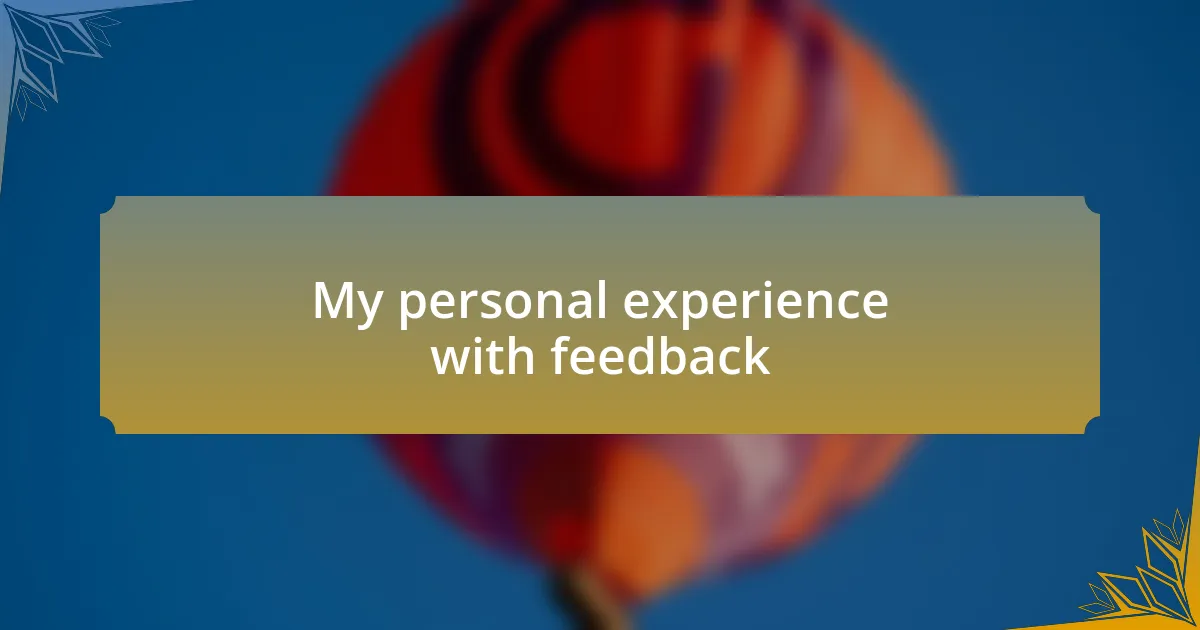
My personal experience with feedback
My personal experience with feedback has taught me just how critical it is to embrace every bit of input I can get. I once received a particularly candid comment from a customer about our website’s navigation. At first, I felt defensive—it stung a bit—but then I realized this person was offering a chance to improve. That single piece of feedback led to a complete overhaul of our navigation system, ultimately making it more user-friendly.
Another memorable moment came after we rolled out a new feature. I was anxious for the feedback but excited too. When I started receiving mixed reviews, it was hard not to take it personally. Yet, instead of feeling disheartened, I saw a treasure trove of insights. Each critique helped us refine the feature further, and I learned to see feedback as a dialogue rather than a judgment.
There’s also something empowering about utilizing feedback for ongoing development. After implementing a change based on customer suggestions, I was amazed to see a tangible uptick in satisfaction ratings. Have you ever felt that rush of success when a small adjustment leads to bigger wins? It’s these moments that reaffirm my belief that feedback isn’t just a task to complete; it’s a vital part of building a better experience.

Lessons learned from customer feedback
There’s a powerful lesson in realizing that feedback isn’t merely a list of complaints; it’s a roadmap to improvement. I recall a situation where a customer mentioned that our checkout process felt cumbersome. Initially, I was taken aback, thinking it was just a minor frustration. But as I dug deeper into the issue, I discovered that optimizing this function could dramatically enhance the overall purchasing experience. This taught me to view each piece of feedback as a stepping stone for growth.
One of the most profound insights I’ve gained is the importance of prioritizing feedback based on frequency and impact. When several customers expressed confusion about the same particular feature, I recognized that this was a signal I couldn’t ignore. This wasn’t just a one-off comment; it was a collective voice advocating for change. I learned to trust patterns in feedback, which helped me allocate resources more effectively toward the most critical areas.
Sometimes, feedback can evoke unexpected emotions. I remember feeling a mix of pride and apprehension when a loyal customer praised our responsiveness but also pointed out gaps in our service. It encouraged me to reach higher, reminding me that excellence is never really a destination. How often do we pause to appreciate constructive feedback that nudges us toward our goals? Each lesson learned through customer feedback not only refines our processes but also deepens our connection to our audience.
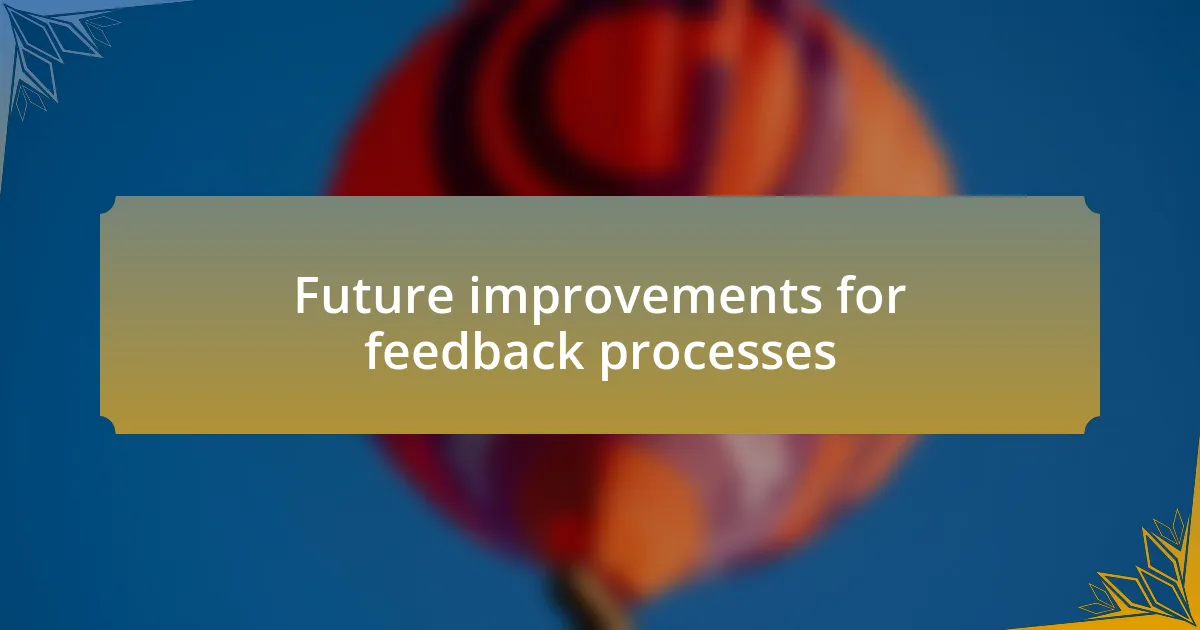
Future improvements for feedback processes
One area I see for future improvement in feedback processes is the incorporation of real-time analytics. Imagine receiving immediate insights right after a customer interacts with your service. I once had a moment where I received live feedback during an event, and it was invaluable. It allowed me to pivot and address concerns on the spot, showcasing a commitment to the customer that they truly appreciated.
Additionally, leveraging artificial intelligence to analyze our feedback could streamline our understanding of customer sentiment. By using AI to identify themes and trends, we can focus on areas for enhancement more swiftly. I recall a time when a data analysis tool revealed common pain points that we had overlooked. If we can utilize technology to dive deeper into feedback analysis, it opens a treasure trove of opportunities for us to enhance the customer experience.
I also find that fostering an ongoing dialogue with customers can strengthen feedback loops. Inviting customers to engage in follow-up conversations after they share their thoughts could transform one-time feedback into a continuous improvement process. When I personally reached out to a customer for their opinion after implementing a suggestion they made, their excitement was palpable. It reinforced the idea that their voice matters, and turning feedback into a two-way conversation might just be the key to long-term loyalty.